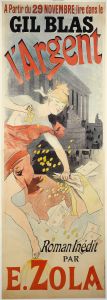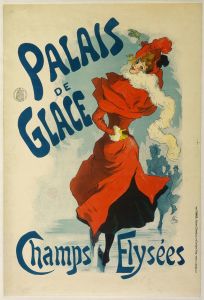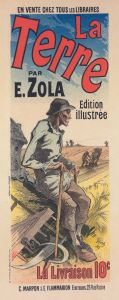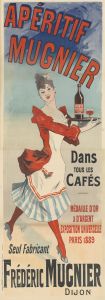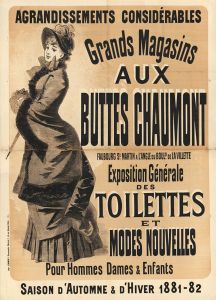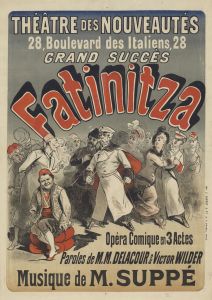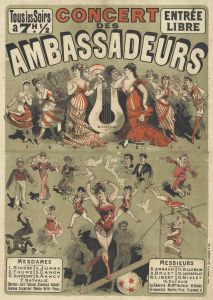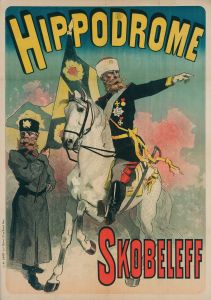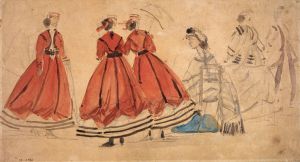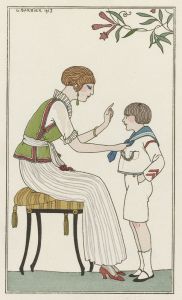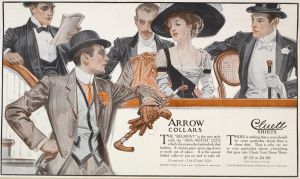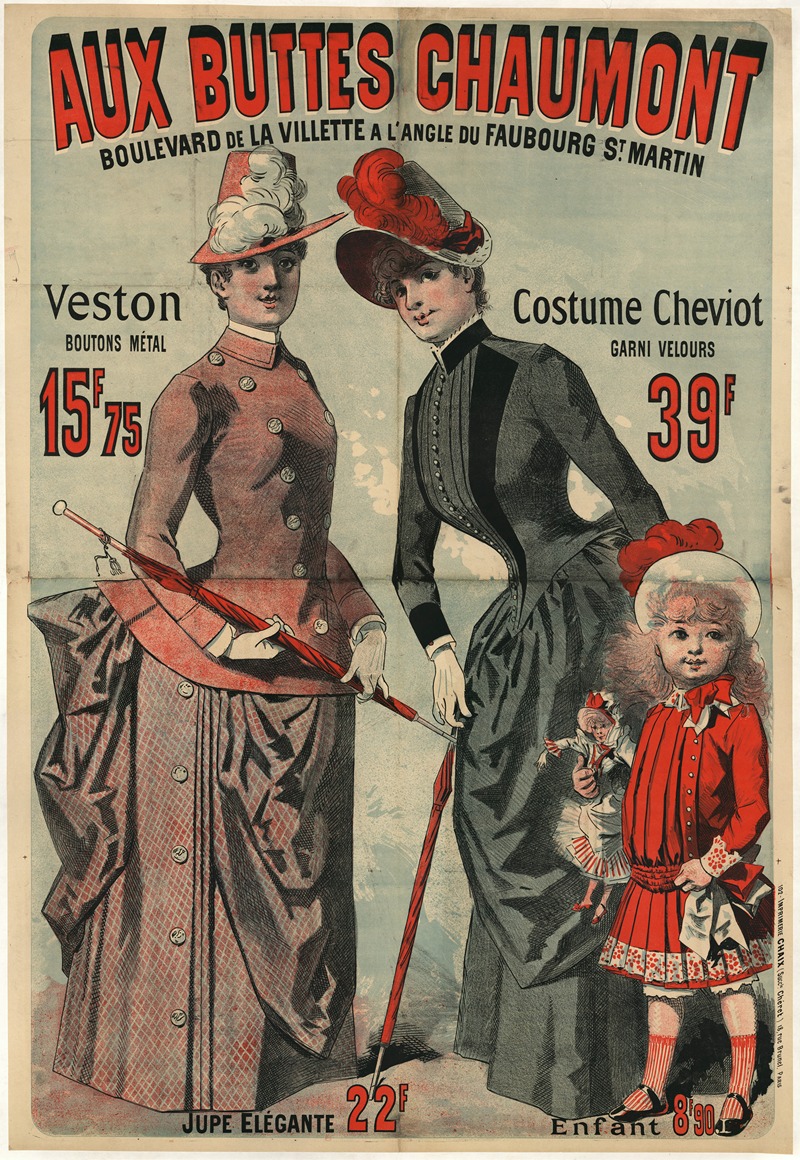
Aux Buttes Chaumont. Veston boutons métal 15f.75 – Costume cheviot garni velours
A hand-painted replica of Jules Chéret’s masterpiece Aux Buttes Chaumont. Veston boutons métal 15f.75 – Costume cheviot garni velours, meticulously crafted by professional artists to capture the true essence of the original. Each piece is created with museum-quality canvas and rare mineral pigments, carefully painted by experienced artists with delicate brushstrokes and rich, layered colors to perfectly recreate the texture of the original artwork. Unlike machine-printed reproductions, this hand-painted version brings the painting to life, infused with the artist’s emotions and skill in every stroke. Whether for personal collection or home decoration, it instantly elevates the artistic atmosphere of any space.
Jules Chéret, a French painter and lithographer, is widely recognized as one of the pioneers of the modern poster. His work "Aux Buttes Chaumont. Veston boutons métal 15f.75 – Costume cheviot garni velours" is a notable example of his contribution to the field of advertising art during the late 19th century. This poster, created in 1897, showcases Chéret's distinctive style and his ability to blend art with commercial appeal.
Jules Chéret was born in Paris on May 31, 1836. He began his artistic training at a young age and later studied lithography. Chéret's career took off when he moved to London in the 1850s, where he was influenced by the vibrant poster art scene. Upon returning to Paris, he applied these influences to his work, eventually earning the title "father of the modern poster."
The poster "Aux Buttes Chaumont. Veston boutons métal 15f.75 – Costume cheviot garni velours" was created to advertise a clothing store located near the Buttes Chaumont park in Paris. The store specialized in men's fashion, and the poster specifically promotes a type of jacket (veston) with metal buttons, priced at 15 francs and 75 centimes, and a cheviot wool suit trimmed with velvet.
Chéret's posters are characterized by their vibrant colors, dynamic compositions, and the use of elegant, flowing lines. This particular poster features a well-dressed man, exuding confidence and style, which would have appealed to the fashion-conscious men of the time. The background includes decorative elements and a sense of movement, typical of Chéret's work, which often incorporated elements of the Rococo revival.
Chéret's innovative approach to poster design involved the use of bold typography and eye-catching imagery, which helped to capture the attention of passersby. His work played a significant role in transforming the streets of Paris into an open-air art gallery, where advertisements were not just commercial messages but also works of art.
Throughout his career, Chéret produced thousands of posters for various products and events, ranging from theatrical performances to consumer goods. His influence extended beyond France, as his techniques and style were adopted by other artists and became a standard in the advertising industry.
In recognition of his contributions to the arts, Jules Chéret was awarded the Légion d'honneur in 1890. He continued to work and innovate in the field of lithography until his death on September 23, 1932.
The poster "Aux Buttes Chaumont. Veston boutons métal 15f.75 – Costume cheviot garni velours" remains a testament to Chéret's skill in merging art with commerce. It is a fine example of how he elevated the poster from mere advertisement to an art form that continues to be celebrated and studied for its artistic and historical significance.





